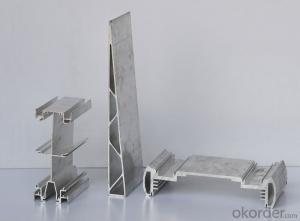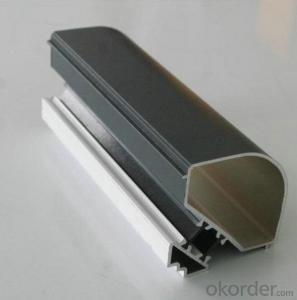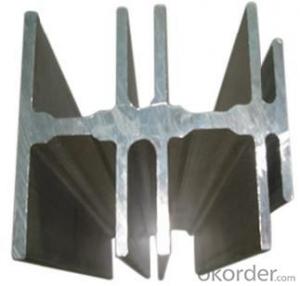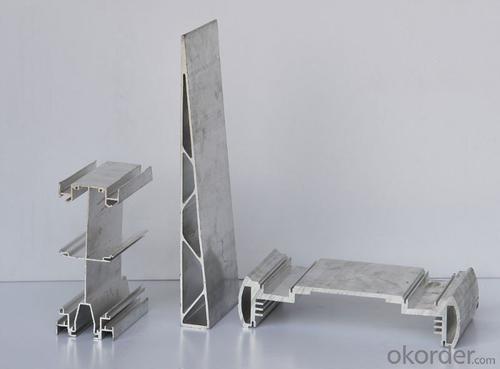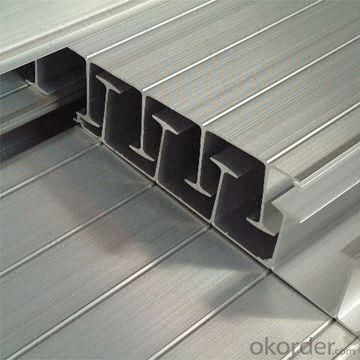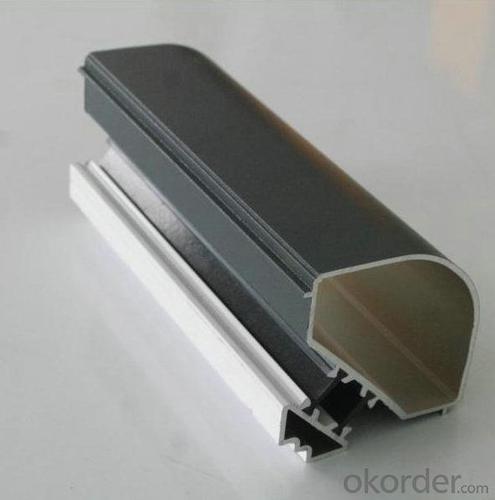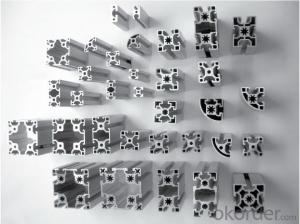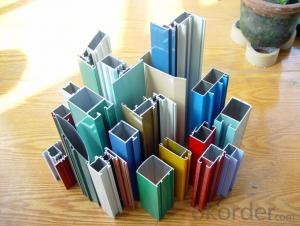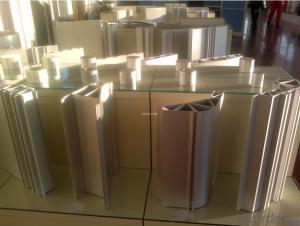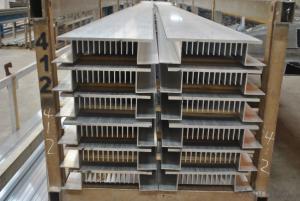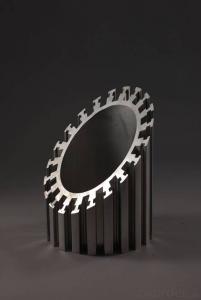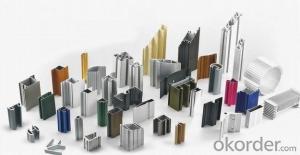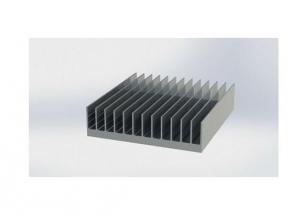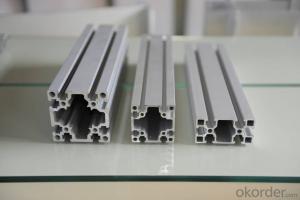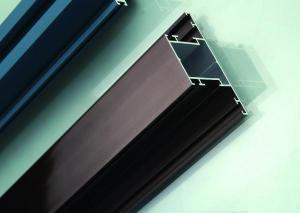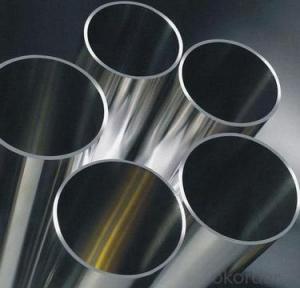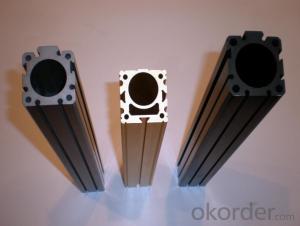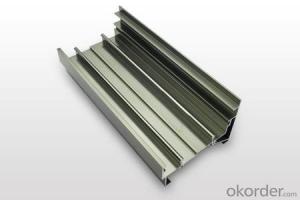Aluminum Railing Profiles for Industrial Applications
- Loading Port:
- China Main Port
- Payment Terms:
- TT OR LC
- Min Order Qty:
- -
- Supply Capability:
- -
OKorder Service Pledge
Quality Product, Order Online Tracking, Timely Delivery
OKorder Financial Service
Credit Rating, Credit Services, Credit Purchasing
You Might Also Like
Material | Alloy 6063,6061,6005or according to customer’s choice |
Temper | T3, T4, T5, T6 |
Surface | Anodize, electrophoresis, powder coating, PVDF coating, wood grain painting, matted, etc. |
Color | Any colour based on Standard Germany RAL Mark |
Length | Coating 6.5 meters, Anodizing 6.5 meters, Mill finish 5 meters |
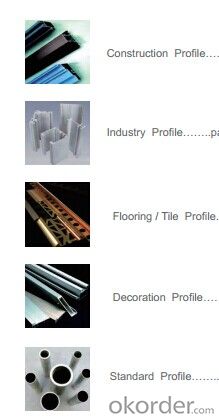
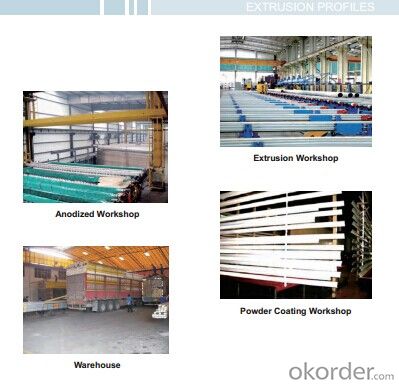
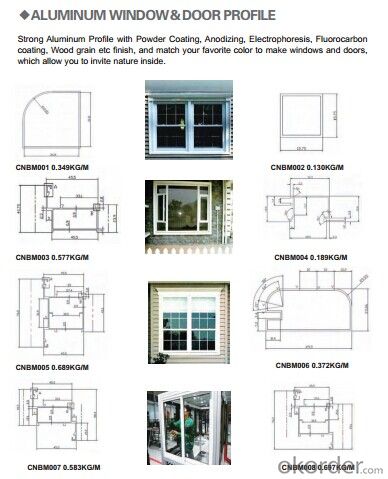
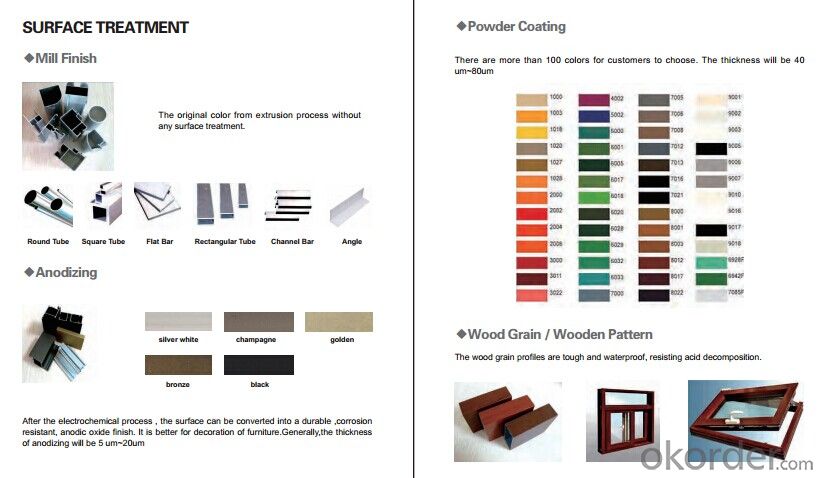
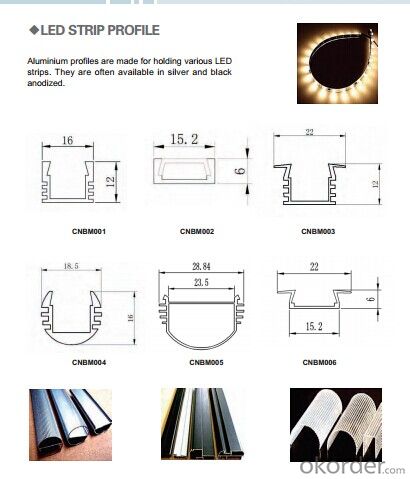
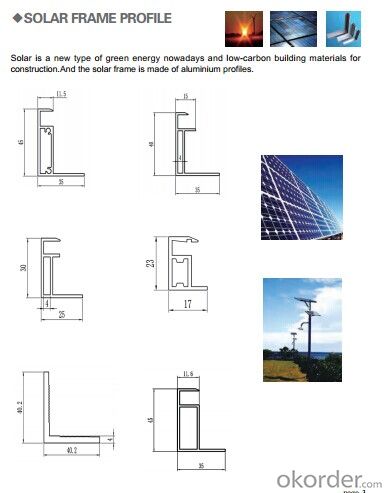
- Q: What are the methods to reduce waste from aluminum profiles in construction?
- <p>To minimize waste generated from using aluminum profiles in building construction, consider the following strategies: 1) Accurate planning and design to reduce offcuts. 2) Utilize modular designs to maximize material usage. 3) Implement recycling programs to repurpose leftover profiles. 4) Opt for suppliers that provide aluminum profiles cut to exact specifications. 5) Educate workers on proper handling and waste reduction techniques. 6) Use digital tools for precise cutting to minimize material waste. 7) Encourage the use of aluminum due to its high recyclability and low energy consumption in the recycling process.</p>
- Q: I am a mold professional, in school are mainly plastic mold and stamping die, but I am now in an aluminum extrusion die master apprentice. Draw pictures every day and walk around the workshop. But I have never met any related knowledge before, and I don't know where to start. I don't know what to do. Sometimes even want to give up, but not reconciled. I hope you can give me some advice. Thank you very much!!!
- 1, to let them die factory processing, mold design they figure, their wages are high, so I want to learn, do not know where to start, buy a book, the mold design of aluminum extrusion, want to learn to know the properties of extrusion machine, structure;2, according to the experience, to a step by step to produce aluminum profile extrusion die to meet the size requirements, first of all to ensure the uniformity of metal flow and extrusion out of the heart often Youao phenomenon, cause the surface subsidence, the flatness is not standard, through a lot of practice conclusion.
- Q: Are there any specific regulations or standards for using aluminum profiles in certain industries?
- Yes, there are specific regulations and standards for using aluminum profiles in certain industries. These regulations and standards vary depending on the industry and the specific application of the aluminum profiles. They are in place to ensure the quality, safety, and performance of the profiles in various industries such as construction, automotive, aerospace, and manufacturing. Compliance with these regulations and standards is essential to meet industry requirements and ensure the proper use of aluminum profiles.
- Q: What are the methods to prevent water infiltration in the gaps between aluminum profiles during the installation process?
- <p>To prevent water from getting into gaps between aluminum profiles during installation, use high-quality sealants and gaskets. Ensure proper alignment and fit of the profiles to minimize gaps. Install weep holes to allow water to drain out. Apply a water-resistant membrane or flashing behind the profiles. Regularly inspect and maintain the installation to identify and fix any issues promptly. Proper installation techniques and materials selection are crucial to prevent water infiltration.</p>
- Q: Can aluminum profiles be used in lighting fixture manufacturing?
- Yes, aluminum profiles can be used in lighting fixture manufacturing. Aluminum is a lightweight and durable material that is often preferred for its ability to dissipate heat, making it ideal for use in lighting fixtures. Additionally, aluminum profiles can be easily customized and shaped to fit various design requirements, making them a popular choice in the lighting industry.
- Q: This question asks for a comparison between aluminum profiles and other materials regarding their visual appeal and aesthetic qualities.
- <p>Aluminum profiles are often favored for their sleek, modern appearance and high aesthetic value. They offer a clean, silvery finish that can be anodized or painted to match various design schemes. Compared to materials like wood, they provide a contemporary look, while their uniformity and precision in manufacturing can surpass the natural variations found in wood. When compared to plastics, aluminum profiles offer a more premium feel and are often perceived as more durable and high-quality. Additionally, aluminum's recyclability and low maintenance requirements contribute to its eco-friendly and aesthetic appeal in sustainable design.</p>
- Q: Can aluminum profiles be used in the production of agricultural machinery?
- Yes, aluminum profiles can be used in the production of agricultural machinery. Aluminum is a lightweight and durable material that can withstand harsh environmental conditions, making it suitable for various components and structures in agricultural machinery. Additionally, aluminum profiles offer flexibility in design and can be easily customized to meet specific requirements, enhancing the efficiency and performance of agricultural equipment.
- Q: How do you clean and maintain aluminum profiles?
- Here are some straightforward steps to clean and maintain aluminum profiles: 1. Begin by eliminating loose dirt or debris from the aluminum profiles' surface using a soft brush or cloth. 2. Create a cleaning solution by combining warm water with mild dish soap or a non-abrasive cleaner. Avoid using harsh chemicals or abrasive cleaners since they can harm the aluminum finish. 3. Immerse a gentle cloth or sponge into the cleaning solution and delicately scrub the aluminum profiles, ensuring that all corners and crevices are thoroughly cleaned. 4. Rinse the profiles with clean water to remove any soap residue. You can accomplish this by using a hose or a bucket of water. 5. Dry the aluminum profiles entirely using a soft, lint-free cloth. This will prevent the formation of water spots or streaks. 6. For routine maintenance, you can employ a specialized aluminum cleaner or polish to restore the shine and safeguard the surface. Follow the product instructions for optimal outcomes. 7. It is crucial to refrain from using abrasive scrubbers, steel wool, or harsh chemicals as they can scratch or damage the aluminum finish. Additionally, never apply acidic cleaners or vinegar on aluminum since they can cause corrosion. 8. If you happen to notice any scratches or minor damages on the aluminum profiles, you can employ a touch-up paint specifically designed for aluminum to repair them. Follow the manufacturer's instructions for application. Always remember that regular cleaning and maintenance will aid in preserving the appearance and longevity of your aluminum profiles.
- Q: This question asks about the various types of aluminum profiles that are specifically used for the purpose of insulating exterior walls.
- <p>Aluminum profiles for exterior wall insulation are crucial for thermal efficiency and structural integrity. Common types include: 1. <strong>Aluminum Cladding Profiles</strong>: These cover the insulation and provide a weather-resistant barrier. 2. <strong>Aluminum Insulation Fin Profiles</strong>: Used to create a gap for insulation material between the wall and the cladding. 3. <strong>Aluminum Casing Profiles</strong>: These encase the insulation, providing a finished look and additional protection. 4. <strong>Aluminum Angle Profiles</strong>: Used for corners and edges to maintain structural integrity. 5. <strong>Aluminum Trim Profiles</strong>: For finishing touches and to cover gaps or seams. Each type serves a specific function in the insulation system, ensuring energy efficiency and a durable exterior wall construction.</p>
- Q: Are there any limitations or drawbacks of using aluminum profiles?
- There exist certain limitations and drawbacks when utilizing aluminum profiles. One constraint is its inferior strength in comparison to materials like steel. When it comes to demanding applications that necessitate high tensile strength or load-bearing capacity, aluminum profiles may not be the most suitable choice. In such circumstances, steel or alternative materials may be more preferable. Another disadvantage is that aluminum is more susceptible to corrosion when contrasted with materials such as stainless steel. Despite the possibility of applying protective coatings to aluminum profiles, they may still be prone to corrosion in harsh environments or if not adequately maintained. This can have an adverse impact on their durability and longevity. Furthermore, aluminum profiles may entail higher initial costs when compared to other materials. The production and processing of aluminum can be more expensive, which can affect the overall cost of incorporating aluminum profiles into construction or manufacturing projects. Lastly, aluminum profiles may have limitations concerning design flexibility. Although aluminum is relatively easy to shape and mold into different profiles, it may not possess the same versatility as certain other materials. This can restrict the range of options available for complex or intricate designs. Despite these limitations and drawbacks, aluminum profiles still offer numerous advantages, including lightweight construction, excellent thermal conductivity, and resistance to electrical conductivity. Therefore, it is crucial to thoroughly contemplate the specific requirements and constraints of a project before deciding to utilize aluminum profiles.
Send your message to us
Aluminum Railing Profiles for Industrial Applications
- Loading Port:
- China Main Port
- Payment Terms:
- TT OR LC
- Min Order Qty:
- -
- Supply Capability:
- -
OKorder Service Pledge
Quality Product, Order Online Tracking, Timely Delivery
OKorder Financial Service
Credit Rating, Credit Services, Credit Purchasing
Similar products
Hot products
Hot Searches
Related keywords
